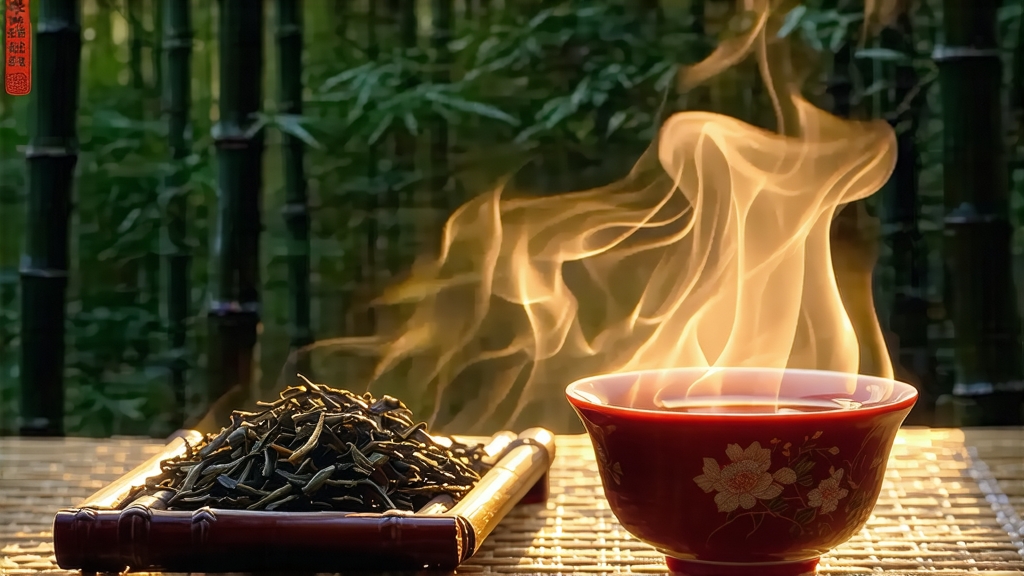
Long before Assam, Ceylon or Earl Grey entered the English lexicon, the words “bohea” and “souchong” were whispered in London coffee-houses with the same reverence today reserved for grand cru Bordeaux. The tea behind those exotic syllables was Lapsang Souchong, the very first black tea ever created and the prototype for every subsequent red-black leaf that spread across the globe. Born in the precipitous Wuyi Mountains of northern Fujian province during the late Ming dynasty, its origin is soaked in folklore: fleeing Qing troops, so the story goes, forced villagers to speed-dry freshly plucked leaves over open pine fires, thereby stumbling upon a process that oxidised the green leaf to a coppery red and infused it with an intoxicating smoky perfume. Whether apocryphal or not, the tale captures the twin pillars of Lapsang Souchong—serendipity and smoke—that still define it four centuries later.
Geographically, the authentic leaf can only come from a 600-square-kilometre UNESCO core-zone enclave where granite cliffs rise out of a subtropical bamboo forest so humid that morning clouds become afternoon rain. Within this micro-climate lie three progressively higher hamlets—Tongmu, Guadun and Miaowan—each granting a slightly different expression of the same cultivar, the small-leaf Wuyi qizhong. At 1 200 m, Guadun’s cooler nights slow oxidation and yield a sweeter, more resinous cup, while the lower Tongmu gardens give a bolder, almost tarry edge. Purists therefore speak of “village Souchong” the way Burgundy lovers speak of climats.
Plucking follows an almost monastic rule: two tiny leaves and a still-rolled bud, picked before Grain Rain when the spring sun is mild and the mountain air smells of azalea. The harvested shoots are cradled in shallow bamboo baskets lined with hemp cloth; any bruising must be deliberate, not accidental, because the leaf’s future fragrance is decided in the next five hours. Withering happens in the second-storey lofts of three-hundred-year-old wooden houses whose cypress beams have absorbed decades of pine smoke. Here, trays of tea rest over slow, smouldering fires built from local Masson pine and a pinch of cedar root; the resin-rich wood gives an aromatic oil that vaporises into the leaf, pre-scenting it before oxidation even begins. Every twenty minutes the tea master shuffles the trays, testing for the tell-tale leather-like limpness that signals readiness for rolling.
Rolling itself is still done on 1970s cast-iron tables whose surfaces have been hand-polished to prevent tearing the delicate leaf. A 12-minute initial crush breaks cell walls; a second 8-minute knead twists the leaf into the tight baroque strips that unfurl later in the cup. Oxidation follows in cedar-lined chests kept at 26 °C and 75 % humidity; colour changes from jade to rust in a hypnotic gradient that must be arrested at exactly 80 % oxidation for the classic “souchong fingerprint”—a cocoa-brown leaf edge with an olive centre. Firing then reunites the leaf with its pine muse: baskets are placed on wrought-iron racks two metres above a pinewood pit fire that burns so low it is almost glowing rather than flaming. For eight hours the tea inhales smoke, but the craftsman’s secret is to finish the last 30 minutes with a charcoal blaze that drives residual moisture down to 3 %, locking the fragrance inside the curl. The result is a glossy, obsidian leaf that smells simultaneously of pine balsam, dried longan and a whisper of lapsangol—a unique terpene found only here.
Western palates usually meet two commercial styles. The “traditional” or “craft” grade uses only spring budsets and the above pinewood regimen, yielding a liquor the colour of sherry that tastes of smoked apricot, cacao and the cooling camphor note Chinese tasters call “mountain air.” The second, cheaper “export” style is quick-smoked with pine sawdust in rotating drums; its aroma is sharper, more kerosene-like, and its taste thin. A third, increasingly fashionable variant is “unsmoked” Lapsang, processed like a modern black tea but still grown in Tongmu; it surprises novices with a natural honeyed sweetness and a hint of cinnamon that purists insist is the true pre-Qing flavour before